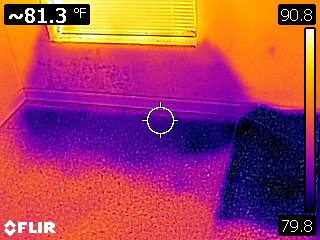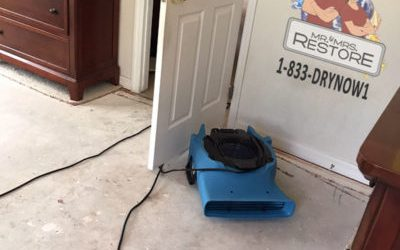Flooding can strike anywhere and — as the name “flash flooding” implies — at any time. Floods are the most common and most expensive natural disaster in the U.S., and no state or territory is safe, according to FEMA, the Federal Emergency Management Agency.
Ignore the risk and you could be sloshing around smelly and soaked carpeting, furniture, walls, appliances, lighting, and ruined electronics and keepsakes. Mold soon follows.
You’ll find yourself ripping out walls to reach soaked insulation, tearing up flooring and replacing anything electrical.
The best way to avoid this is to stay above water.
“The one nasty thing about flooding is that there is no (margin) of safety other than elevation,” says Tim Reinhold, senior vice president of research and chief engineer at the Insurance Institute for Business & Home Safety, or IBHS.
“Once the water reaches the level of your floor and goes an inch above, you have significant damage,” Reinhold adds.
It’s important to know the flood level at your home — an official measure of how high floodwaters could rise where you live. You’ll find this information by checking the online flood maps on FEMA’s website. Your local building department and your home insurance agent will know this, too.
But even a home on a hill needs flood-proofing. Here are 6 measures that will offer some protection if flooding occurs.
Be sure to use licensed and insured contractors to make any modifications. Check with your local building department about permit requirements.
Flood Safety Tip #1. Safeguard in-home electrical and climate systems
Raise switches, sockets, circuit breakers and wiring at least a foot above the expected flood level in your area, the IBHS website advises.
Modify your furnace, water heater and any other anchored indoor equipment so that it sits above your property’s flood level.
Flood Safety Tip #2. Anchor and raise outdoor equipment
Fuel tanks, air-conditioning units and generators should be anchored and raised above your flood level.
Unanchored fuel tanks can break free, and severed supply lines will contaminate surrounding ground, the IBHS warns.
Jose Mitrani, engineer and professor emeritus at the OHL School of Construction at Florida International University in Miami, cautions that electrical power units and generators should never sit on the ground.
“These backup facilities will be inundated (by water) and useless,” he warns.
Flood Safety Tip #3. Modify water valves
A flooded sewer system can cause sewage to back up into your home. So you won’t find yourself knee-deep in you-know-what, install an interior or exterior backflow valve, IBHS advises.
The Federal Alliance for Safe Homes, or FLASH, recommends gate valves. They are more complex, and you operate them by hand. But they provide stronger seals than flap or check valves, which open automatically to allow water to flow out and then close when water tries to get in.
Valves should be installed on all pipes entering the house, FLASH advises.
Flood Safety Tip #4. Determine how water flows around your house
Called the grading or slope, the angle of the ground can direct water to or away from your house. Obviously, it’s best if the home was built so that water drains away from the building.
This is easy enough to determine by watching how water flows or accumulates during an average rainstorm, says FLASH President and CEO Leslie Chapman-Henderson.
If your street is prone to standing water even after a fairly ordinary rainstorm, talk to your county planning or environmental services department, she advises. “A major part of their job is water flow, and they can make suggestions.”
Flood Safety Tip #5. Opt for a major retrofit
If your home floods frequently and moving isn’t an option, you may need to take drastic and costly measures.
FLASH’s home safety program suggests 3 options:
- Raise your home on piers or columns so that the lowest floor is above the flood level. If that sounds expensive — well, it would be. Experts tell FLASH that such an undertaking would cost $20,000 and up, Chapman-Henderson says.
- “Wet-proof” your home by installing foundation vents that would allow water to flow through the building, instead of rising inside and causing more damage. You’d need at least 2 vents on different walls. A 1,000-square-foot house would require 7 square feet of flood vents, according to FLASH.
- Do some “dry proofing” by applying coatings and other sealing materials to your walls to keep out floods.
Flood Safety Tip #6. Take last-minute measures as waters rise
- Clear gutters, drains and downspouts.
- Move furniture, rugs, electronics and other belongings to upper floors, or at least raise them off a ground floor.
- Shut off electricity at the breaker panel.
- Elevate major appliances onto concrete blocks if they’re potentially in harm’s way from flooding.
Mr. and Mrs. Restore in Naples, Florida is IBHS certified, and can discuss with you the risk of flooding in your area, and the correct steps to keep your home safe. Contact us today for your free assessment.













